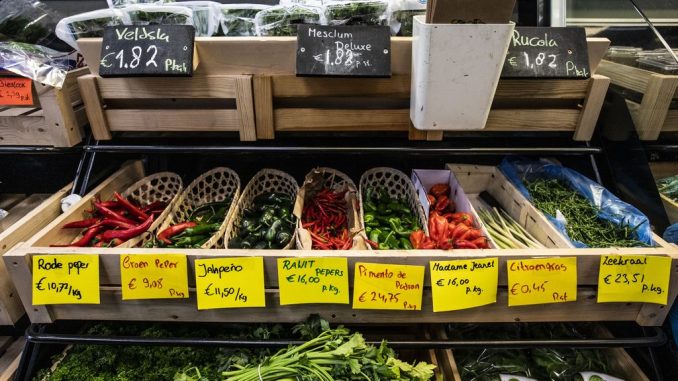
CBS Reports Inflation Reaches 5.2% in April
The Central Bureau of Statistics (CBS) has reported that the inflation rate in the Netherlands reached 5.2% in April, according to a provisional estimate. This indicates that the average prices for consumer goods, including groceries and energy, were 5.2% higher than in April last year. The CBS estimate also showed that prices rose slightly faster than in March, mainly due to a less sharp drop in energy prices compared to last year.
Rise in Prices of Food, Industrial Goods and Services
The report further showed that food, drink, and tobacco in particular had become more expensive, along with industrial goods. Food prices rose by 13.3% compared to last year, which is slightly less than in March. The increase in prices of goods and services can be attributed to factors such as supply chain disruptions, logistics problems, and the rise in demand as countries emerge from lockdowns.
Core Inflation Remains Steady at 6.7%
Excluding food and energy, core inflation in the Netherlands remains steady at 6.7%, the same level seen in February and March. This suggests that the rise in inflation can be mainly attributed to the prices of consumer goods such as groceries and energy that are affected by external factors such as global prices and supply chain issues.
Inflation Rise Attributable to the Russian Invasion of Ukraine
Inflation in the Netherlands began to rise sharply after the Russian invasion of Ukraine in February 2021. As a result, gas and electricity prices surged, and inflation rose significantly. While the inflation rate has been declining in recent months, prices of food, industrial products, and services have continued to increase.
Sustained Wage Growth
As compensation for the rise in inflation, substantial wage demands are set in collective bargaining agreements. On average, wage growth is currently higher than inflation. However, experts warn that high inflation can lead to a rise in interest rates in the long run, which may negatively affect the economy.
Impact on Consumers
The rise in inflation has a direct impact on consumers, who may have to spend more on basic necessities such as groceries and energy. This can lead to a reduction in disposable income and a slowdown in spending on non-essential goods and services, which can negatively impact the economy. Further, a higher inflation rate can also lead to a rise in borrowing costs and increase the burden of debt on households and firms.
Outlook
While inflation is expected to remain high in the near future, it is likely to moderate in the long run as global supply chain issues are resolved and economies stabilize. However, uncertainties such as the ongoing Covid-19 pandemic and geopolitical tensions may affect the magnitude and duration of inflation in the future.

Be the first to comment